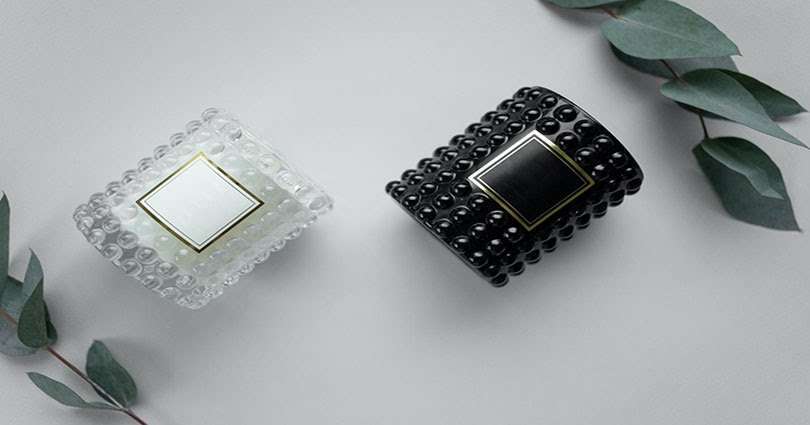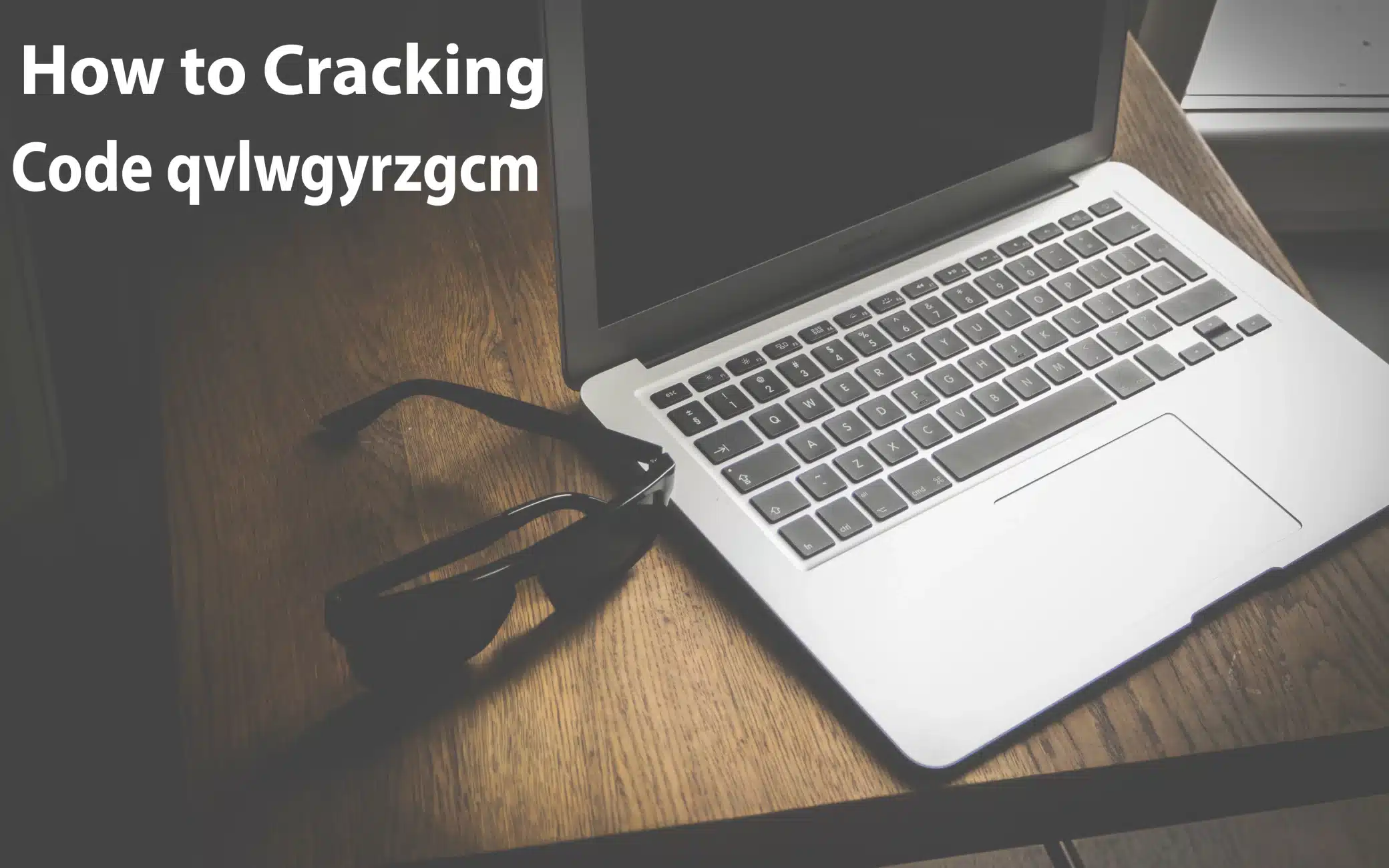How To
How Do I Get a Pure White Background in Product Photography?

Table of Contents
One of the best things about professional product photography is its amazing ability to change how your brand is perceived by your target audience. It makes your business look put-together and creates an impression of being a high authority and reliable brand.
When it comes to product photography, using white backgrounds is one of the oldest tricks of the trade. The cool, white hues allow your product to stand out with all of its features on display for potential customers to view. On the other hand, busy backgrounds have the opposite effect and could even distract the audience away from the main product.
Removing background in product photography is of utmost importance. Pixel By Hand does this flawlessly to create stunning product images that ensure quick conversions to sales. It gives your product pictures a clean and crisp look while highlighting your products marvellously.
Let’s look into the best ways to get a pure white background in product photography.
How to Get Perfect White Backgrounds in Product Photography
Use a Light Box or Tent
The very first thing you need to do is decide whether you will use natural light or studio light. Since most professional product shoots are done in studio light, we will consider this first before discussing natural light shoots.
For a white background in studio photo-shoots, you will need to invest in a soft light-box. These are see-through boxes that send out concentrated but softened light to your product. This allows consistent light settings throughout the shoot, with the shadows mostly eliminated for more crisp photos.
Soft light-boxes also need two to three clamp lights with bulbs. One of the bulbs will be your backlight, while the other will serve as the key light to be placed in front for an even wash of light.
2. Make the Most of Daytime Hours
If you don’t have the budget to invest in a light-box, that’s okay! Both professional and amateur product photographers often prefer working in natural light. This may require them to plan their shoots better and work within a limited time frame, but the results that come out are absolutely flawless, especially over a white background.
Whether you’re taking the pictures yourself or opting for outsource photo editing, make sure that it is done with as much natural light as possible. Set up a simple scene before the day of the shoot and take pictures every hour to find the best time to shoot under natural light. Compare the pictures and choose the hours when your white background looks the whitest.
Also, remember to pay attention to the shadows in your pictures. You can get ecommerce retouching done on the pictures from Pixel By Hand to soften or reduce shadows and diffuse the light.
3. Create a White Background
Now, onto the next most important thing – the white background.
If you aren’t using a light-box, you will need to create a white background yourself. Your white background can be as simple as crisp white sheets hanging behind the product, a white poster board, or a full, professional backdrop.
The way you create your white background depends entirely on your budget. For a low-budget shoot, a simple white poster board can work wonders to give your pictures that perfect white background. However, you will need to ensure that the board isn’t cream-coloured or even off-white. It has to be pure white!
If you’re using a white wall as the background, make sure it isn’t textured. Only smooth, white walls can be used because it is nearly impossible to blur out the texture in ecommerce retouching.
For a more professional shoot, you can simply opt for a versatile white background from Amazon. These backgrounds can be rolled and therefore are highly portable, allowing you to use them whenever you wish to shoot some gorgeous pictures!
4. Use Off-Camera Flash
Your white background is now ready to be used. If you want to ensure you get a bright, even-toned background in your product pictures, be sure to light it up with an off-camera flash. All you need to do is move your product 5-6 feet away from the white background and hide a flash behind it. Make sure the flash is pointing to the background to eliminate any shadows.
CLICK HERE: FOR MORE READING ABOUT UPDATED TIME AND PLEASE FOLLOW ME ON FACEBOOK, TWITTER
5. Retouch and Make Colour Adjustments
Lastly, you will need to do minor retouching and colour adjustments in post-production. It is best to get this done by experts in photo editing services for eCommerce. They will work on erasing any dust spots or fibres that could be present in the photographs. Retouching also includes adjusting the exposure and brightness to ensure your image is well saturated. The editing experts will ensure that the product’s colours and features pop while continuing to be true-to-colour for your target audience.
How To
816-608-8691 Contact Details and Usage Guide

Table of Contents
The 816-608-8691 service is a comprehensive support system designed to meet the diverse needs of users. Available 24/7, this service provides assistance with technical issues, customer inquiries, billing questions, and more. By offering multiple contact methods, including phone calls, text messages, emails, and online chat, 816 608 8691 ensures accessibility and convenience for all users. The dedicated team behind 816-608-8691 is committed to delivering prompt, reliable, and effective solutions, making it a trusted resource for anyone seeking assistance.
816-608-8691 Overview
The 816-608-8691 service is designed to offer comprehensive support and assistance for a wide range of user needs. It is a centralized contact number providing help with technical issues, customer service inquiries, billing questions, and more. The service is geared towards ensuring user satisfaction by delivering prompt and effective resolutions. With a dedicated team of professionals, 816 608 8691 aims to be a reliable resource for users seeking assistance.
Introduction to 816-608-8691 Services
816-608-8691 offers a comprehensive range of services designed to meet the diverse needs of its users. From customer support to technical assistance, this contact number is a gateway to a host of solutions. Whether you need help troubleshooting an issue, have questions about products or services, or require detailed information, 816 608 8691 is equipped to provide timely and effective support. The service aims to ensure user satisfaction by delivering high-quality assistance and addressing concerns efficiently.
Key Features of 816-608-8691
The 816-608-8691 service boasts several key features that make it an essential resource for users. It provides 24/7 availability, ensuring that help is always just a call away. Additionally, it offers multilingual support to cater to a diverse user base. The service also includes specialized departments for various types of inquiries, ensuring that calls are directed to the appropriate experts. With its user-friendly interface and efficient call routing system, 816 608 8691 is designed to provide a seamless and hassle-free experience.
816-608-8691 Contact Methods and Availability
Users can reach 816-608-8691 through multiple methods, including direct phone calls, text messages, and emails. The service also offers a contact form and live chat option on its website for added convenience. The 816 608 8691 service is available 24/7, ensuring that users can receive support at any time, including holidays. This round-the-clock availability highlights the service’s commitment to providing continuous and reliable assistance to its users.
How to Reach 816-608-8691
Reaching 816-608-8691 is simple and straightforward. Users can dial the number directly from any phone, including landlines, mobile phones, and VoIP services. In addition to voice calls, the service also supports text messaging and email communication for those who prefer written correspondence. For added convenience, the 816 608 8691 website provides a contact form and live chat option, allowing users to get in touch through multiple channels. Each method is designed to offer quick and efficient access to support.
Availability and Operating Hours of 816-608-8691
The 816-608-8691 service is available 24 hours a day, seven days a week, ensuring that assistance is always accessible, regardless of the time or day. Additionally, the service operates on holidays, providing uninterrupted support throughout the year. This consistent availability underscores the service’s commitment to customer satisfaction and reliability, making 816 608 8691 a dependable resource for all users.
816-608-8691 Customer Support and Assistance
The 816-608-8691 service offers various types of support, including technical help, customer service, product information, and billing assistance. The support team is equipped to handle a wide range of issues, from device setup and software installation to resolving billing discrepancies and answering product-related questions. The goal is to provide comprehensive support that addresses the diverse needs of users efficiently and effectively.
Types of Support Offered by 816-608-8691
The 816-608-8691 service offers a wide array of support options to address various user needs. This includes technical support for troubleshooting device issues, customer service for account-related inquiries, and product information for detailed knowledge about available offerings. Additionally, the service provides assistance with billing and payments, helping users manage their financial transactions. The comprehensive support system is designed to ensure that users receive the help they need promptly and efficiently.
Common Issues Resolved by 816-608-8691
Common issues resolved by 816-608-8691 range from technical glitches to account management problems. Users frequently seek help for device setup, software installation, and connectivity issues. Billing discrepancies and payment processing are other areas where the service provides critical assistance. Additionally, users often contact 816 608 8691 for guidance on using new features or services. The support team is well-equipped to handle a variety of problems, ensuring quick resolutions and minimal disruption to users’ activities.
816-608-8691 Usage Instructions and Guidelines
Using 816-608-8691 is straightforward. Users can dial the number directly to reach a support representative or use text messaging and email for written correspondence. The website offers a contact form and live chat for online assistance. It is advisable to have relevant information, such as account details or device specifics, ready to expedite the support process. Following the automated menu options and providing clear, concise information will help ensure a smooth and efficient experience.
Step-by-Step Guide to Using 816-608-8691
Using 816-608-8691 is easy with this step-by-step guide.Upon connection, listen to the automated menu options and select the appropriate one for your inquiry. If you need to speak with a representative, choose the option to connect with customer support. For text-based inquiries, send a message to the number, including your name and issue. You can also visit the website and use the contact form or live chat. Following these steps ensures you receive the help you need efficiently.
Best Practices for Effective Use of 816-608-8691
To get the most out of 816-608-8691, follow these best practices. Clearly state your issue or question when prompted, providing any relevant details to help the representative understand your needs. Keep any necessary information, such as account numbers or device details, on hand to expedite the process. For email or text inquiries, provide concise and accurate information. Additionally, be patient and courteous to the support staff, as this will facilitate a more pleasant and effective interaction. Adhering to these practices ensures a smoother and more productive experience.
816-608-8691 Frequently Asked Questions
The FAQ section for 816-608-8691 addresses common inquiries, such as how to contact support, the types of services available, and response times. It also covers issues like the confidentiality of user information and the process for escalating unresolved problems. Detailed answers to these questions help users understand how to effectively utilize the service and what to expect during their interaction with 816 608 8691.
Common FAQs About 816-608-8691
Common FAQs about 816-608-8691 address a variety of topics to help users understand and utilize the service effectively. Questions often include how to contact support, the types of services offered, and the availability of multilingual assistance. Users also inquire about response times, the process for escalating issues, and the confidentiality of their information. These FAQs provide essential insights and answers, ensuring users have the knowledge they need to make the most of the 816 608 8691 service.
Detailed Answers to 816-608-8691 Queries
Detailed answers to queries about 816-608-8691 offer clarity and guidance. For instance, the service is reachable via phone, text, email, and online chat, ensuring multiple points of access. Response times vary, but the aim is to address inquiries as swiftly as possible, often within a few minutes for urgent issues. Escalations are handled by specialized departments to ensure expert resolution. All user information is treated with strict confidentiality to protect privacy. These detailed answers help users navigate the service with confidence and ease.
816-608-8691 Benefits and Advantages
The key benefits of using 816-608-8691 include its 24/7 availability, multilingual support, and specialized assistance for various issues. The service provides a user-friendly interface and multiple contact methods, ensuring accessibility and convenience. Unique advantages include quick response times, expert problem resolution, and a commitment to user satisfaction. These benefits and advantages make 816 608 8691 a valuable resource for anyone in need of reliable support.
Key Benefits of Using 816-608-8691
The key benefits of using 816-608-8691 are numerous and impactful. Users gain access to a reliable support system that operates 24/7, ensuring help is always available. The service’s multilingual capabilities cater to a global audience, breaking down language barriers. With specialized departments for various issues, users receive targeted and expert assistance. Additionally, the user-friendly interface and multiple contact methods enhance accessibility. These benefits combine to create a highly effective and user-centric support experience.
Unique Advantages of 816-608-8691
The unique advantages of 816-608-8691 set it apart from other support services. Its round-the-clock availability, including holidays, ensures uninterrupted assistance. The service’s commitment to user satisfaction is evident in its quick response times and efficient problem resolution. The multilingual support expands its reach, making it accessible to a broader audience. Additionally, the seamless integration of voice and text-based communication options offers flexibility and convenience. These unique advantages make 816 608 8691 an indispensable resource for users.
816-608-8691 Feedback and Improvement
Users are encouraged to provide feedback on their experience with 816-608-8691 through post-call surveys, the website’s feedback form, social media, and email. Continuous improvement efforts are a key focus, with the team regularly reviewing feedback to identify areas for enhancement. Training programs for support staff are updated based on user needs, and technological upgrades are implemented to improve efficiency. These efforts ensure that 816 608 8691 remains a top-tier support service, constantly evolving to better serve its users.
How to Provide Feedback on 816-608-8691
Providing feedback on 816-608-8691 is straightforward and encouraged. Users can share their experiences and suggestions through various channels. After a call, users may be prompted to participate in a brief survey to rate their satisfaction. Additionally, the 816 608 8691 website features a feedback form where users can submit detailed comments. Social media platforms and email are also viable options for providing feedback. This input is invaluable for improving the service and ensuring it meets user needs effectively.
Continuous Improvement Efforts for 816-608-8691
Continuous improvement is a cornerstone of the 816-608-8691 service. The team regularly reviews feedback to identify areas for enhancement. Training programs for support staff are updated to reflect the latest best practices and emerging user needs. Technological upgrades, such as improved call routing and advanced analytics, are implemented to streamline operations. Additionally, the service actively seeks user input to inform changes and innovations. These efforts ensure that 816 608 8691 remains a leading support resource, consistently evolving to better serve its users.
Conclusion
In conclusion, 816-608-8691 stands out as a reliable and user-friendly support service, offering round-the-clock assistance and a variety of contact methods to ensure users can easily reach out for help. With its focus on providing expert resolutions and maintaining high levels of customer satisfaction, 816 608 8691 continues to be an essential resource for addressing a wide range of issues. Whether you need technical support, customer service, or help with billing, 816 608 8691 is dedicated to meeting your needs efficiently and effectively.
How To
8882381346: Dealing with Spam and Scam Calls

Table of Contents
The number 8882381346 has gained notoriety as a frequent source of spam and scam calls, prompting caution among phone users worldwide. These calls often involve various deceptive tactics, including attempts at bank fraud and impersonation of government agencies. Despite efforts to trace their origin, the true perpetrators remain elusive, underscoring the malicious intent behind such communications. In this context, it becomes imperative for individuals to exercise vigilance and employ protective measures when encountering calls from 8882381346. This introduction sets the stage for a deeper exploration into the nature of these calls and the strategies for safeguarding against potential scams and frauds.
8882381346: A Common Identifier for Spam and Scam Calls
The number 8882381346 has become synonymous with spam and scam calls, with numerous reports from users encountering fraudulent activities linked to this identifier. Despite its seemingly innocuous appearance, calls originating from 8882381346 often involve deceptive tactics aimed at exploiting unsuspecting individuals. Understanding the nature of these calls is crucial in safeguarding oneself against potential threats and scams.
Recognizing the Tactics: Types of Fraudulent Attempts Associated with 8882381346
Scammers employing the number 8882381346 employ a variety of tactics to deceive their targets. Common fraudulent attempts associated with calls from this number include phishing schemes, where callers impersonate legitimate organizations to extract sensitive information such as bank account details or personal identifiers. Additionally, individuals may receive calls claiming to be from government agencies or financial institutions, demanding immediate action or payment under false pretenses. By recognizing these deceptive tactics, individuals can better protect themselves from falling victim to scams perpetrated through calls originating from 8882381346.
Protecting Yourself: Tips for Handling Calls from 8882381346
When dealing with calls from 8882381346, it’s essential to take proactive measures to protect yourself from potential scams and frauds. Here are some tips to consider:
- Verify Caller Identity: Before providing any personal information or engaging in conversation, verify the identity of the caller by asking for their name, organization, and contact details.
- Be Skeptical of Urgent Requests: Exercise caution when receiving urgent requests for personal or financial information. Scammers often use high-pressure tactics to coerce individuals into making impulsive decisions.
- Never Share Sensitive Information: Avoid sharing sensitive information such as Social Security numbers, bank account details, or passwords over the phone, especially with unknown callers.
- Hang Up and Verify: If you suspect a call from 8882381346 is fraudulent, hang up immediately. Take the time to verify the legitimacy of the call by contacting the organization or individual directly using trusted contact information.
- Block the Number: Consider blocking calls from 8882381346 or similar suspicious numbers on your phone to prevent further contact from potential scammers.
Reporting Scams: Steps to Take if You Encounter 8882381346
If you encounter suspicious calls from 8882381346, it’s important to take action to protect yourself and others from potential harm. Here are steps to consider:
- Report the Call: Report the suspicious call to relevant authorities, such as the Federal Trade Commission (FTC), the Federal Communications Commission (FCC), or your local law enforcement agency.
- Provide Details: Provide as much information as possible about the call, including the phone number, caller’s identity (if known), and any relevant details about the nature of the scam.
- Warn Others: Inform friends, family members, and colleagues about the scam call to raise awareness and prevent others from falling victim to similar fraudulent activities.
- Stay Informed: Stay informed about common scams and frauds circulating in your area by regularly checking updates from trusted sources and organizations dedicated to scam awareness and prevention.
Staying Informed: Resources for Keeping Up-to-Date on Scam Awareness
In the ever-evolving landscape of scam tactics, staying informed is crucial to safeguarding yourself against potential threats associated with calls from numbers like 8882381346. Fortunately, there are various resources available to help you stay up-to-date on scam awareness. Consider the following:
- Official Government Websites: Government agencies such as the Federal Trade Commission (FTC) and the Federal Communications Commission (FCC) often provide valuable information and resources on scam awareness, including tips for recognizing and reporting scams.
- Consumer Protection Organizations: Organizations dedicated to consumer protection, such as Consumer Reports and the Better Business Bureau (BBB), frequently publish articles and alerts on the latest scam trends and tactics.
- Scam Awareness Websites: There are numerous websites and online forums dedicated to scam awareness and prevention, where users share information about recent scams and discuss strategies for staying safe.
- Social Media Channels: Follow official accounts of government agencies, consumer protection organizations, and scam awareness websites on social media platforms for real-time updates and alerts about new scams circulating in your area.
- Local Law Enforcement: Your local law enforcement agency may offer resources and support for scam awareness and prevention, including educational materials, community outreach programs, and reporting mechanisms for suspicious activity.
Legal Considerations: Understanding Your Rights in Dealing with 8882381346 Scams
In dealing with scams associated with calls from 8882381346, it’s important to understand your rights and legal protections. While laws and regulations vary by jurisdiction, here are some general legal considerations to keep in mind:
- Do Not Call Registry: If you’re receiving unwanted telemarketing calls, you can register your phone number on the National Do Not Call Registry to reduce the number of unsolicited calls you receive.
- Telephone Consumer Protection Act (TCPA): The TCPA imposes restrictions on telemarketing calls, including requirements for obtaining prior consent before making automated or prerecorded calls to consumers.
- Consumer Protection Laws: Various consumer protection laws may offer recourse for individuals who have been targeted by fraudulent or deceptive practices, including laws governing unfair and deceptive trade practices, identity theft, and financial fraud.
- Reporting Scams: Reporting scam calls to relevant authorities, such as the FTC, FCC, or local law enforcement, can help investigate and prosecute perpetrators and prevent future instances of fraud.
- Legal Remedies: In cases where individuals have suffered financial losses or other damages as a result of scam calls, legal remedies such as civil lawsuits or class action lawsuits may be pursued against the responsible parties.
Community Awareness: Spreading the Word to Prevent Others from Falling Victim
One of the most effective ways to combat scams associated with calls from numbers like 8882381346 is through community awareness. By spreading the word and educating others about the tactics used by scammers, we can collectively work towards preventing more individuals from falling victim to these fraudulent activities. Here are some ways to promote community awareness:
- Share Information: Utilize social media platforms, community forums, and local neighborhood groups to share information about common scam tactics and recent incidents involving calls from 8882381346.
- Host Educational Events: Organize community workshops, seminars, or webinars to educate residents about recognizing and avoiding scams, including those involving phone calls from suspicious numbers.
- Distribute Flyers and Posters: Create informational flyers or posters highlighting tips for identifying scam calls and distribute them in public places such as libraries, community centers, and local businesses.
- Collaborate with Local Organizations: Partner with local government agencies, law enforcement, schools, senior centers, and other community organizations to disseminate scam awareness materials and raise awareness among diverse segments of the population.
- Encourage Reporting: Encourage community members to report scam calls to relevant authorities, such as the FTC, FCC, or local law enforcement, and provide them with resources and guidance on how to do so effectively.
Conclusion:
In conclusion, combating scams associated with calls from numbers like 8882381346 requires a concerted effort from individuals, communities, and authorities alike. By staying informed, exercising caution, and spreading awareness, we can collectively work towards preventing others from falling victim to fraudulent activities. Together, we can create a safer and more vigilant community, where individuals are empowered to recognize and avoid scams, ultimately safeguarding themselves and their loved ones from financial harm and emotional distress. Let us continue to unite in our efforts to protect against scams and promote a culture of awareness and resilience in our communities.
How To
How to Cracking the Code qvlwgyrzgcm

Table of Contents
Have you ever come across a code that you just couldn’t crack? It can be frustrating and time-consuming, but what if I told you that there is a way to decipher even the most complex codes? That’s right, in this article, we will be discussing how to crack the code qvlwgyrzgcm. This may seem like a random assortment of letters, but it holds significant meaning for businesses and individuals alike. By understanding what the code means and how to crack it, you can unlock valuable insights that can help your business thrive. So let’s dive in and discover the secrets behind qvlwgyrzgcm!
What is the Code?
The Code is a term that has been used in various contexts, but in this article, we are referring to qvlwgyrzgcm. This may seem like a random string of letters and may even appear meaningless at first glance. However, it is actually a code that can unlock immense potential for businesses.
The Code is essentially a set of principles and strategies that can be applied to improve your business operations and increase profitability. It involves analyzing data, identifying patterns, and making informed decisions based on the insights gained from this analysis. The Code can be used across various industries and sectors, from finance to healthcare to retail.
By cracking the Code, businesses can gain a competitive edge by optimizing their processes and improving their bottom line. It requires a willingness to embrace new technologies and methodologies, as well as a commitment to continuous improvement. In the following sections, we will explore what the Code means and how you can crack it for your own business success.
What the Code means
The Code, qvlwgyrzgcm, is a complex system of algorithms and data structures that has been designed to help businesses optimize their operations. At its core, the Code is all about analyzing data and using that analysis to make informed decisions. It can help businesses identify patterns and trends in customer behavior, track inventory levels, and even predict future sales.
But the Code isn’t just about numbers and statistics. It’s also about understanding the human element behind those numbers. By analyzing customer behavior, for example, businesses can gain insight into what motivates their customers to make purchases. This data may then be utilized to develop more focused marketing efforts or to improve product offers.
Ultimately, the Code is a tool that can help businesses make better decisions based on data-driven insights. It’s not a magic solution that will solve all of your business problems overnight, but it can be an incredibly powerful asset when used correctly. In the next section, we’ll explore how you can crack the Code and start reaping its benefits for your own business.
How to crack the Code?
Cracking the Code can be a daunting task, but with the right approach and mindset, it can be achieved. The first step is to understand that the Code is not something that can be cracked overnight. It takes perseverance, patience, and a willingness to learn.
One effective way to crack the Code is to start by breaking it down into smaller parts. Analyze each part individually and try to understand its purpose and function. Once you have a good understanding of each part, you can start putting them together to get a better understanding of how they work together.
Another important aspect of cracking the Code is to stay up-to-date with the latest trends and technologies in your field. This will allow you to stay ahead of the curve and get an advantage over your competition.
Lastly, don’t be afraid to ask for help or seek out resources that can assist you in cracking the Code. There are many online forums, blogs, and communities dedicated to helping people understand complex concepts like qvlwgyrzgcm.
By following these tips and staying committed to your goal, you too can crack the Code and unlock its full potential for your business.
The benefits of qvlwgyrzgcm for businesses
As a business owner, you are always on the lookout for ways to improve your operations and increase profits. One way to do this is by cracking the code of qvlwgyrzgcm. By understanding and utilizing this code, businesses can gain a competitive advantage in their respective industries.
One of the main benefits of qvlwgyrzgcm is its ability to help businesses optimize their processes. This code provides insights into consumer behavior, allowing companies to tailor their products and services to meet the needs and preferences of their target audience. Additionally, qvlwgyrzgcm can help businesses identify trends and patterns in data, which can be used to make informed decisions about marketing strategies, product development, and more.
Another benefit of qvlwgyrzgcm is its potential to improve customer satisfaction. By using this code to better understand their customers’ needs and desires, businesses can provide more personalized experiences that resonate with consumers on a deeper level. This might result in improved customer loyalty and repeat business.
Overall, cracking the code of qvlwgyrzgcm can have a significant impact on a business’s bottom line. By leveraging this powerful tool, companies can gain valuable insights into consumer behavior and use that knowledge to drive growth and success in their industry.
How to use qvlwgyrzgcm for your business
Now that you understand what qvlwgyrzgcm is and how to crack the code, it’s time to explore how your business can benefit from it. The good news is that there are many ways to use this code to improve your business operations and increase revenue.
One way to use qvlwgyrzgcm is by incorporating it into your marketing strategy. By using this code in your advertising campaigns, you can attract new customers who are intrigued by the mystery of the code. You can also offer discounts or special promotions for customers who successfully crack the code, which can help increase customer engagement and loyalty.
Another way to use qvlwgyrzgcm is by incorporating it into your product packaging or labeling. This can add an element of excitement and intrigue for customers who are curious about the meaning behind the code. It can also help differentiate your products from competitors and make them more memorable.
Overall, using qvlwgyrzgcm for your business can be a fun and creative way to engage with customers, increase brand awareness, and ultimately drive sales. So why not give it a try?
Conclusion
In conclusion, cracking the code qvlwgyrzgcm can be a game-changer for businesses looking to stay ahead of the competition. Understanding what the code is and what it means is crucial in unlocking its potential benefits. By following the steps outlined in this article, businesses can successfully crack the code and use it to their advantage. From improving customer engagement to increasing sales, qvlwgyrzgcm has the power to transform your business. So don’t wait any longer, start cracking that code today and watch your business soar!
-

 Travel4 years ago
Travel4 years agoThe Family of Kirk Passmore Issues a Statement Regarding the Missing Surfer
-

 Technology4 months ago
Technology4 months agoManyroon: The Key to Unlocking Future-Proof Business Solutions
-

 Cryptocurrency1 year ago
Cryptocurrency1 year agoBest Tips For Cryptopronetwork com Contact 2024
-

 Technology3 years ago
Technology3 years agoPaturnpiketollbyplate Login & Account Complete Guide Paturnpike.com
-

 Apps & Software2 years ago
Apps & Software2 years agoFapello 2023: Social Media Platform for NSFW Content
-

 Law3 years ago
Law3 years agoShould I Hire a Lawyer For My Elmiron Case?
-

 Business4 months ago
Business4 months agoCoyyn.com Gig Economy: Smart Contracts and Fair Payments for Freelancers
-

 Business4 months ago
Business4 months agoAcumen: The Key to Smart Decision-Making and Success






